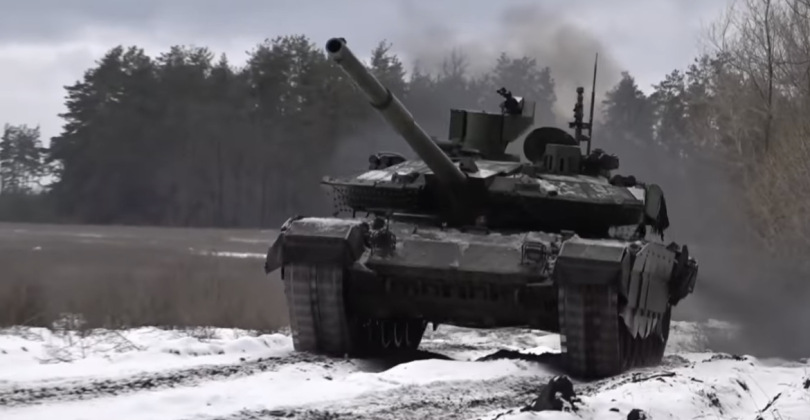News
Russian Army Has Received Hundreds of T-90M Tanks Under Surged Production – Reports
The Russian Army has reportedly recently several hundred T-90M tanks ready for frontline operations, according to an anonymous source cited by state media outlet Sputnik, with large numbers of new T-72B3M tanks having also been delivered. The announcement closely follows indications by Deputy Chairman Russian Security Council former president Dmitry Medvedev in the penultimate week of March that 1500 of the vehicles would be produced over the next year. “We will make 1,500 tanks alone this year. You can calculate how much our enemy will get, even according to the most optimistic calculations.” “Our enemies thought that our industry would be overwhelmed. There were endless claims: munitions are running out, tanks are running out, missiles are running out,” he added, citing the scale of tank production as evidence contradicting this. He stated regarding the need for expanded production: “Sure, we didn’t think it would be necessary sometime ago. But it became a necessity.” As by far the most capable tank in Russian service, the T-90M completed testing in February 2020 and joined the Army in April that year, but was acquired on a very limited scale before the outbreak of the Russian-Ukrainian War in February. Major losses among older tank classes, and strong demonstration of the new model’s advantages, were key factors spurring a production surge.

One of the T-90M’s most notable advantages over older tanks is its integration of the 2A46M-5 gun and Kalina fire control system, which allow it to deploy the wide range specialised munitions some of which began to be seen in Ukraine in early 2023. The new tank also integrates a communication and command suite and digital communications systems significantly ahead of those of other operational Russian tanks. Its survivability benefits from the integration of the Afghanit active protection system and Relikt explosive reactive armour as well as isolation of munitions from the remainder of the vehicle internally, the benefits of which have already been seen in Ukraine. Like all Russian tanks, the ability to use explosive fragmentation projectiles provides an important advantage in infantry support roles – which has been the primary role for which tanks have been used by both sides in the conflict.

The Russian Army has received multiple batches of T-90Ms of unknown size since its forces began major operations in Ukraine in February 2022, with the vehicles beginning to be seen in the theatre in late April that year. Russia already comfortably outproduced all other tank manufacturers in the world combined with its T-90 output, although the large majority of these previously went to foreign clients most notably India and Algeria. The industry’s massive surplus capacity inherited from the Soviet era is expected to be key to facilitating production on a much larger scale not seen since 1991 to meet the demands of ongoing war in Ukraine and standoff with NATO. Whether production for export will continue to supplement the 1500 tanks produced for domestic use in the next year remains uncertain, with Russia’s dominant position in global markets for armour having been hard won and remaining highly prized.
Under the Soviet Union the Uralvagonzavod tank factory which produces T-90s today had in the 1980s been producing an estimated 1800-2300 T-72s per year – a vehicle which the T-90 is closely based on originally under the original designation T-72BU. This was considered a peacetime production figure with a potential having been built into the facility to almost double production in wartime. Thus a war production surge to 1500 vehicles today, and potentially more for export, is far from unthinkable despite very low tank acquisitions over the last 30 years. Alongside T-90M acquisitions, an upgrade package for the older T-72 tanks bringing armour protection levels to a similar standard to the T-90M was first seen in December 2022, and is expected to provide a much needed survivability improvement against Ukraine’s potent arsenal of anti tank weapons.












